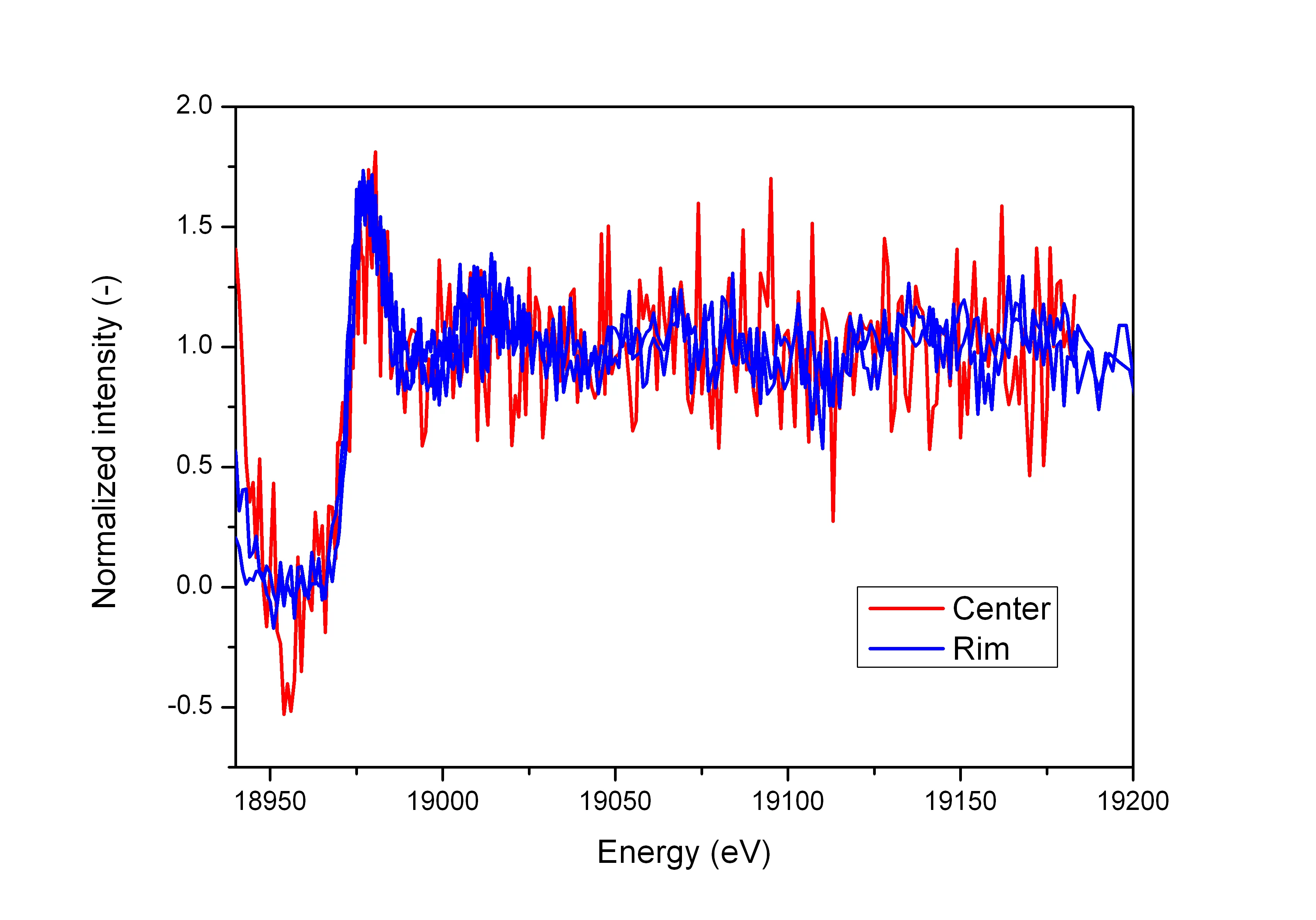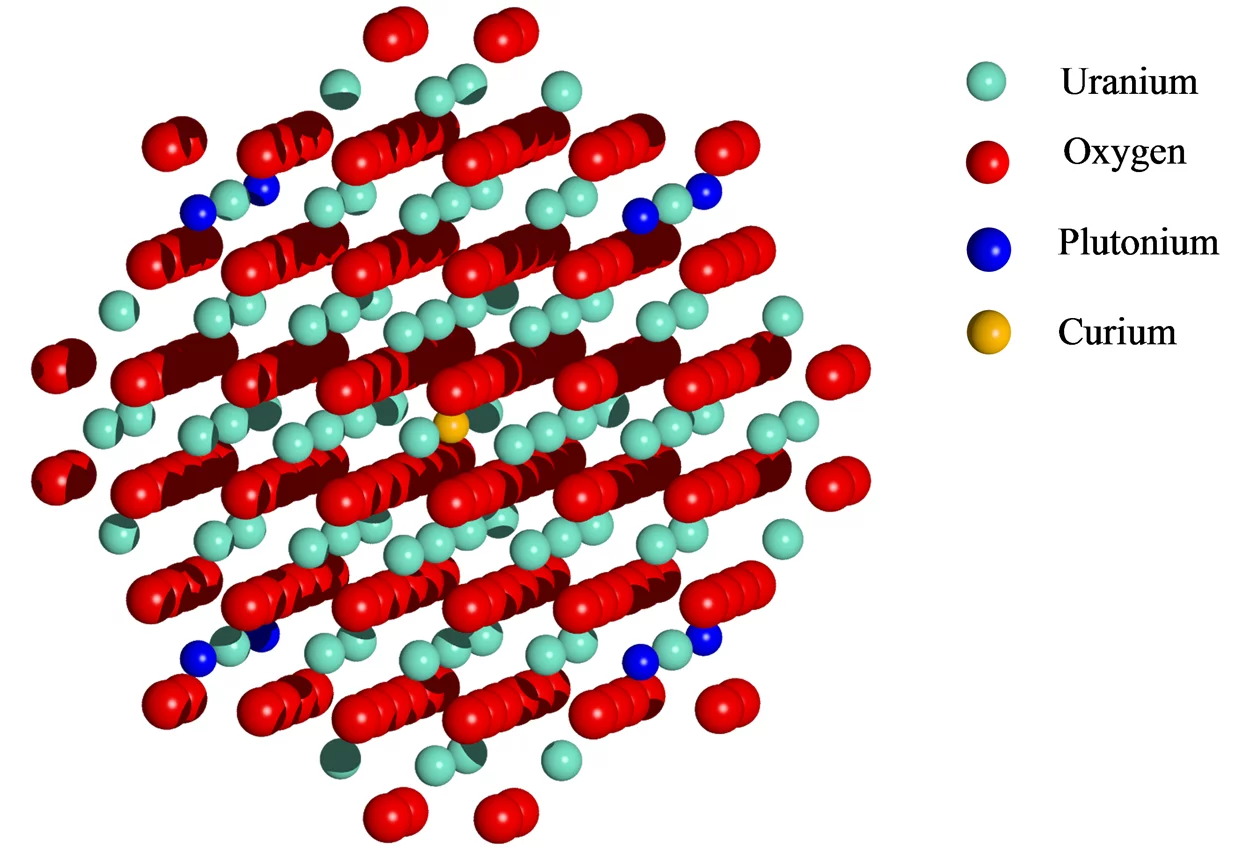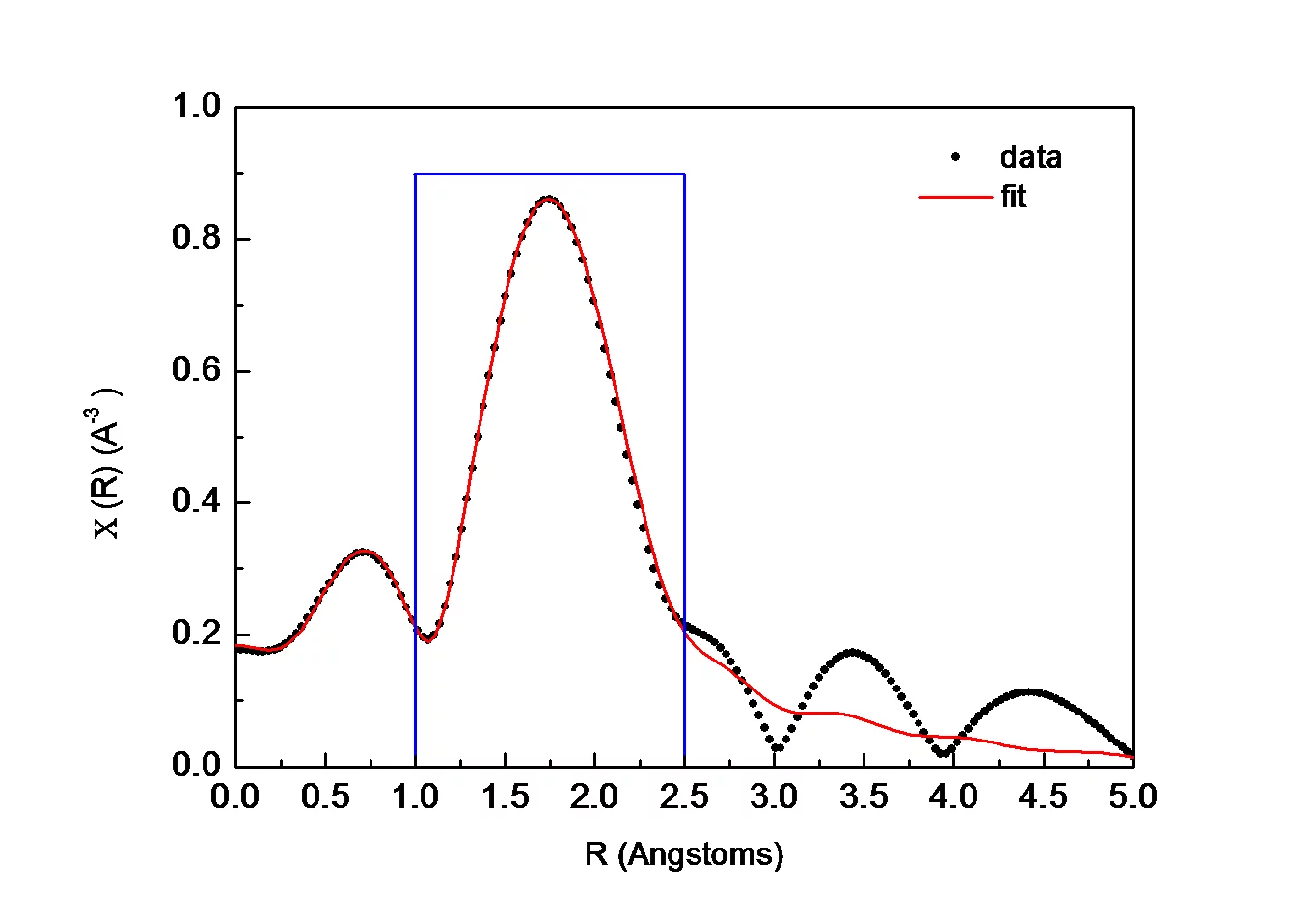Curium LIII XAFS spectra of the irradiated MOX samples in the fuel rim and center zones.
Modeling – UO2 fluorite super cell with 295 ions (78 U, 8 Pu, 1 curium and 208 O). The U-O distance is 2.37 Å, the Pu-O distance is 2.33 Å and the Cm-O distance is deduced from the XAFS data.
Analyses of the EXAFS at the Cm LIII-edge on irradiated MOX fuel. The experimental (symbols) and fit (line) data of the EXAFS oscillations are presented as Fourier transform in R-space. The window used for the Fourier transform is also shown.
Beam campaigns at the synchrotron source require the collaboration and coordination of several teams, especially when radioactive samples are tested. Colleagues from the PSI hotlab, the beam line and from the groups of the Laboratory for Nuclear Materials are involved. A coordination team has been established with the following tasks:
- Organization of beam campaigns
- Coordination of proposals
- Optimization of sample preparation, measurements and data analysis
- Monitoring of publications
Example of work:
Main organizational steps: sample material identification, decision about measurement focus, proposal submission, sample preparation in hotlab, sample transfer to beam line, organization of shifts, measurements, sample transfer back to hotlab, data analysis, publication.
Story and outcome: Plutonium uranium mixed oxide (MOX) fuels are used in commercial nuclear reactors. After irradiation, the actinides need to be assessed in respect to their confinement or potential leachability. The local occurrence, speciation and next-neighbor environment of Cm has been analyzed in the (Pu,U)O2 lattice within an irradiated (60 MW d kg-1 average burn-up) MOX sample using micro X-ray fluorescence (μXRF) and absorption fine structure (μXAFS) spectroscopy. Cm builds up as Cm3+ species (>90%) within a (CmO8)13- or (CmO7)11- coordination environment and no (<10%) Cm(IV) can be detected in the outer pellet zone. Curium dioxide is reduced because of the redox buffering activity of the uranium dioxide matrix and of its thermodynamic instability.
Story and outcome: Plutonium uranium mixed oxide (MOX) fuels are used in commercial nuclear reactors. After irradiation, the actinides need to be assessed in respect to their confinement or potential leachability. The local occurrence, speciation and next-neighbor environment of Cm has been analyzed in the (Pu,U)O2 lattice within an irradiated (60 MW d kg-1 average burn-up) MOX sample using micro X-ray fluorescence (μXRF) and absorption fine structure (μXAFS) spectroscopy. Cm builds up as Cm3+ species (>90%) within a (CmO8)13- or (CmO7)11- coordination environment and no (<10%) Cm(IV) can be detected in the outer pellet zone. Curium dioxide is reduced because of the redox buffering activity of the uranium dioxide matrix and of its thermodynamic instability.


